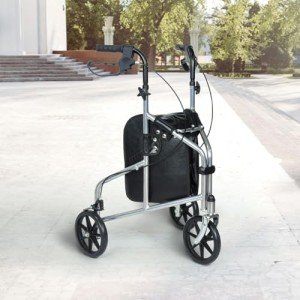Adjustable walkers are essential mobility aids developed to supply stability and support to people with mobility obstacles. They improve self-reliance, safety, and confidence for people recovering from surgery, handling chronic conditions, or facing age-related mobility problems. This post explores the features, types, benefits, and common FAQs connected to adjustable walkers, using insights for potential users and caretakers.
An adjustable walker is a mobility aid that generally includes a lightweight Walking Frame Rollator With Storage four legs, geared up with handgrips for support. It can be adapted to accommodate various heights, guaranteeing users achieve a comfy wrist position while supporting their weight. Adjustable walkers been available in numerous designs, each customized to particular requirements.
| Function | Description |
|---|---|
| Height Adjustment | Telescoping legs for tailored height settings |
| Weight Capacity | Differs by model, supporting different body weights |
| Foldability | Collapsible design for simple transport and storage |
| Wheels | Offered in both wheeled and non-wheeled choices |
| Extra Accessories | Trays, baskets, and cup holders for user convenience |
The rate of adjustable walkers ranges depending upon functions, materials, and brand name. Here's an overview of the typical costs associated with different types:
| Walker Type | Average Cost |
|---|---|
| Requirement Walkers | ₤ 50 - ₤ 100 |
| Wheeled Walkers | ₤ 75 - ₤ 200 |
| Hemi Walkers | ₤ 60 - ₤ 150 |
| Infant Walkers | ₤ 30 - ₤ 70 |
The right adjustable walker depends upon your particular requirements, physical condition, and environment. It's essential to consult a health care professional to identify the most appropriate type.
Many adjustable walkers feature a height-adjustment mechanism. Nevertheless, not all walkers are adjustable. It's crucial to take a look at product specs before buying.
Yes, wheeled walkers (or rollators) are safe for users who can navigate them properly. They frequently include brakes for included safety when stationary.
Regular care includes cleaning up the walker with mild soap and water, looking for wear on grips and wheels, and guaranteeing mechanisms run efficiently.
Yes, numerous adjustable walkers are Convenient Mobiclinic® Foldable Shopping Trolley with Seat and developed for simple transport. Nevertheless, it's recommended to check the particular standards of the transport service.
Many users can run adjustable walkers individually, particularly when correctly fitted to their height. However, those with extreme mobility problems might take advantage of assistance.
Adjustable walkers are vital tools for enhancing mobility, self-reliance, and safety. With a range of design and styles, people can find a walker tailored to their needs. Caregivers and users alike need to appreciate the significance of speaking with healthcare experts to make informed choices concerning mobility aids. Understanding the features, benefits, and considerations of adjustable walkers empowers individuals to maintain an active way of life, enhancing their quality of life in spite of mobility challenges.

No Data Found!

